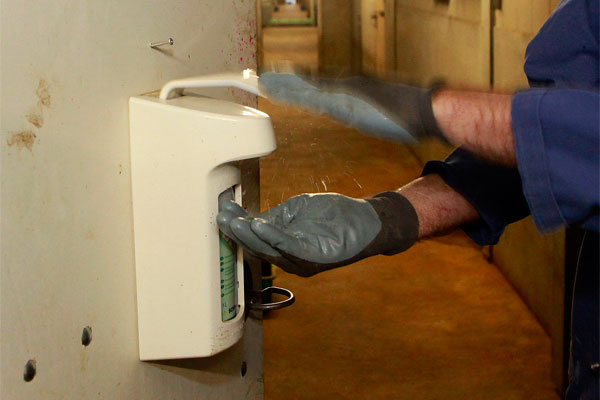Managing the basics makes all the difference

Adequate clean water and quality feed, ventilation management, body weight control, and litter management are the obvious essential components. In the experience of Tom Procter and Dominic Smith of Cobb Europe if a flock of breeders does not perform well, it often is simply down to neglecting some of these basic needs.
The final point is the importance of competent, proactive people in managing the birds. The management techniques are meaningless if the person responsible for the birds doesn’t have the correct skill set to get the most out of the flock. Quality people can make the difference between the success and failure of a flock. This is where it is important for the industry to attract the right calibre of personnel, which comes down to making young people – and their teachers and careers advisers – aware of the career potential in the modern poultry industry. No other sector of farming has such a career ladder, and young people with talent and ambition can go far.
Maintaining good flock health
The first step in creating and implementing a successful biosecurity programme is to understand the risks. Biosecurity is risk management and there will always be a balance between cost and biosecurity interventions. Therefore, a risk assessment will help develop a targeted programme to limit or eliminate the introduction of disease to the birds. To understand the risks it’s important to know what avian species are on your door step — the disease pressures. This can be commercial poultry sites, backyard chickens or local attractions such as open water sources that attract large wild bird populations.
Keep tight control on visitors
Make it clear that in the interests of flock health, strict biosecurity measures are followed. All gates to the farm should be locked with instructions for any visitor to contact the site manager before entry on to the site. Make sure that all visitors have a genuine need to attend the site and that they sign in a visitors’ book, stating the reason for their presence, and whether they have had contact with poultry in the past 72 hours.
Showering on to site
The best procedure is provide a shower and change of clothing and boots for all visitors as well as employees. More sites are adopting these good procedures. At Cobb we insist on all employees and visitors taking a shower for timed five minutes to ensure no pathogens are entering the farm.
Vehicles and equipment
Only essential vehicles and equipment should be permitted on to the farm. If vehicles have to enter, they should be thoroughly disinfected, paying close attention to the exterior, wheels, and wheel arches. Allowing tools and equipment on to the site should also be minimised, especially those that have been used on other farms. Equipment brought on to the farm should undergo disinfection.
Foot dips and boot changing
Too often foot dips are neglected with the water becoming contaminated with leaves and soil, and the disinfectant deactivated. Ideally, use a covered foot dip outside each house, measure the dilution rate accurately and change the solution every one to two days.
Alternatively boot changing into the poultry house is a proven way of reducing the disease challenge. This is easier to carry out using different coloured boots for inside and outside the chicken house. Secondly, a specific area should be defined, such as a physical barrier or a line on the floor, which will set the boundaries for using the outside and inside boots and limit any cross-contamination risks.
Guard against vermin and wild birds
Check baiting points for rats and mice every week, and make sure the housing is vermin proof — pay special attention to worn door seals, vents and drain holes. Keep the grass closely mown. Avoid feed spills — a cyclone is much better than a sock to cover the feed exhaust pipe. And lop any overhanging trees or branches to discourage wild birds.
Staff awareness
Biosecurity is only effective if it applies to everyone all the time. Creating a biosecurity culture is critical to achieve buy-in from staff — to ensure for example that boots are dipped and hand sanitizers used every time. Continual training of staff around the critical control points and explaining their significance, is a vital part of any biosecurity programme.













